Home Page
Puerto Rico
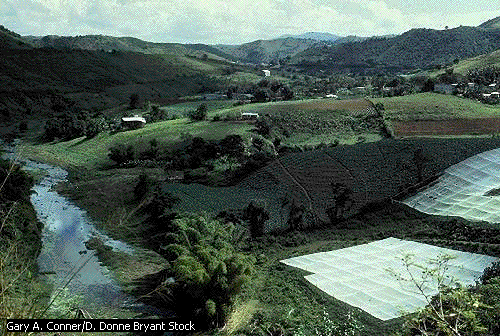
Puerto Rico is mountainous. The Central Mountains form an east to west backbone that extends almost the entire length of the island. The average elevation of these mountains, which include the Cordillera Central and the Sierra de Luquillo, is about 915 m (about 3000 ft). Although the mountains and adjacent foothills cover most of Puerto Rico, on the northern side of the island lies a coastal plain up to about 19 km (about 12 mi) wide, and a narrower coastal plain up to about 13 km (about 8 mi) wide extends along the southern coast. For most of its length the mountain system is nearer the southern coast than the northern coast, and the slopes are generally steeper on the southern side. At the eastern end of the island, however, the mountains curve toward the northeastern corner.
Rivers and Lakes
Puerto Rico has many relatively short rivers and streams. Some of the rivers are dammed for hydroelectric power and thus have small lakes along their courses. One such body of water is Lago de Yauco, on the Yauco River. The longest river is the Grande de Arecibo, which flows to the northern coast. Other rivers include the Grande de Añasco, Bayamón, Cibuco, Culebrinas, and La Plata. None of the rivers is navigable by large vessels.
Climate
Puerto Rico is a mountainous, tropical island directly in the path of the trade winds. These conditions account for its tropical rain forest and tropical wet and dry climates. Except at night, in the highest areas, the air is always warm. There is little difference from season to season in the energy received from the sun, and the length of the day remains fairly constant throughout the year. In addition, the average temperature of the sea water surrounding the island is about 27° C (about 81° F), with little variation during the course of the year. Trade winds reaching Puerto Rico from the east blow over this warm water and carry the warmth over the land. This air also contains much water vapor, and as the air is forced to rise over the mountains, it becomes cooler, and part of its water vapor condenses and falls as rain. The mountain areas receive more rain than almost any other part of the United States. The southwestern coastal area generally receives the least rain in Puerto Rico and has a distinct dry season. The mean annual temperature at San Juan, in the north, is 27° C (80° F), and the city receives 1329 mm (52.3 in) of precipitation each year. The recorded temperature in the commonwealth has ranged from 4.4° C (40° F) in 1911 at Aibonito to 39.4° C (103° F) in 1906 at San Lorenzo. Puerto Rico is sometimes struck by damaging hurricanes traveling from the east, especially from August to October.
Plants and Animals
Several thousand varieties of tropical plants grow in Puerto Rico, including the kapok tree (see Ceiba) with its thick trunk, the poinciana (a prickly tropical shrub with brilliant reddish blossoms), the breadfruit, and the coconut palm. A tropical rain forest in the northeastern section of the island has tree ferns, orchids, and mahogany trees; part of this tropical area is included in the Caribbean National Forest. In the dry southwestern corner of Puerto Rico are cactus and bunch grass.
Puerto Rico has no large wild mammals. The mongoose was brought in to control rats on sugarcane plantations. Iguanas and many small lizards abound, and bats are present. The island has one animal found almost nowhere else in the world—the coquí, a small tree frog that produces a loud, clear “song” from the branches of trees at night. Barracuda, kingfish, mullet, Spanish mackerel, tuna, lobster, and oysters are among the many fish inhabiting coastal waters.
Mineral Resources
Puerto Rico’s mineral deposits include limestone, glass sand, clay, copper, cobalt, chromium, nickel, iron ore, and peat. Great deposits of copper are in the central region near Adjuntas and Utuado.
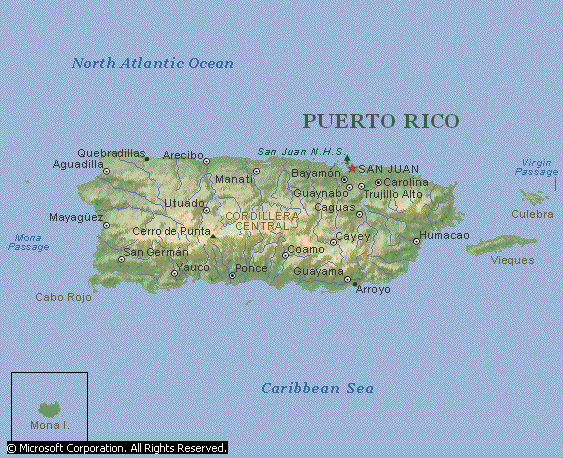
I was raise in a small town call ponce in the south of puerto rico.
but I was born in Bronx N.Y.
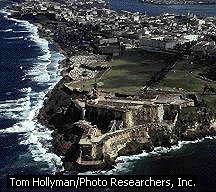
This is El Morro a historical place in San juan Puerto Rico.
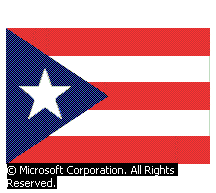
This is the flag of Puerto Rico.
Visit Puerto Rico
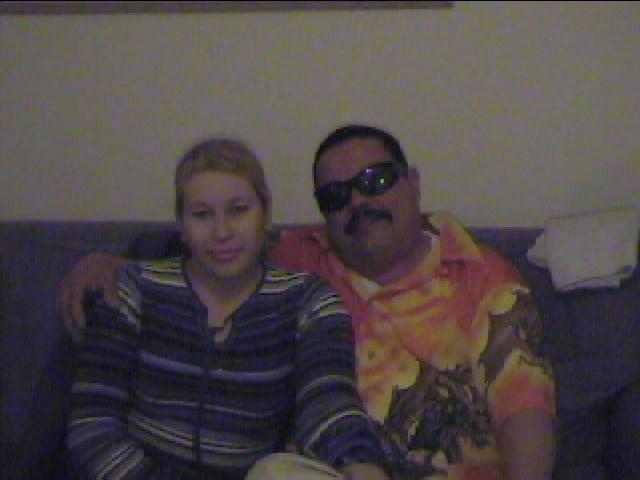
My mom and my dad
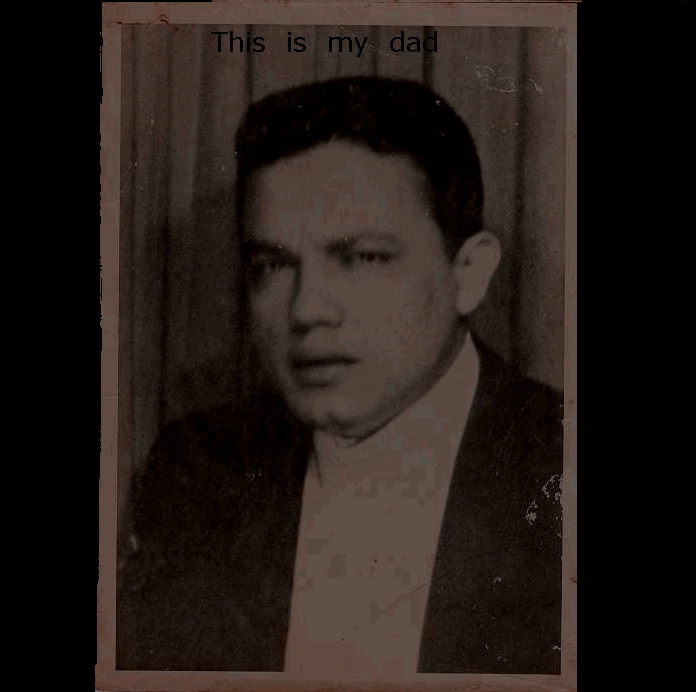
A very old picture isn't it
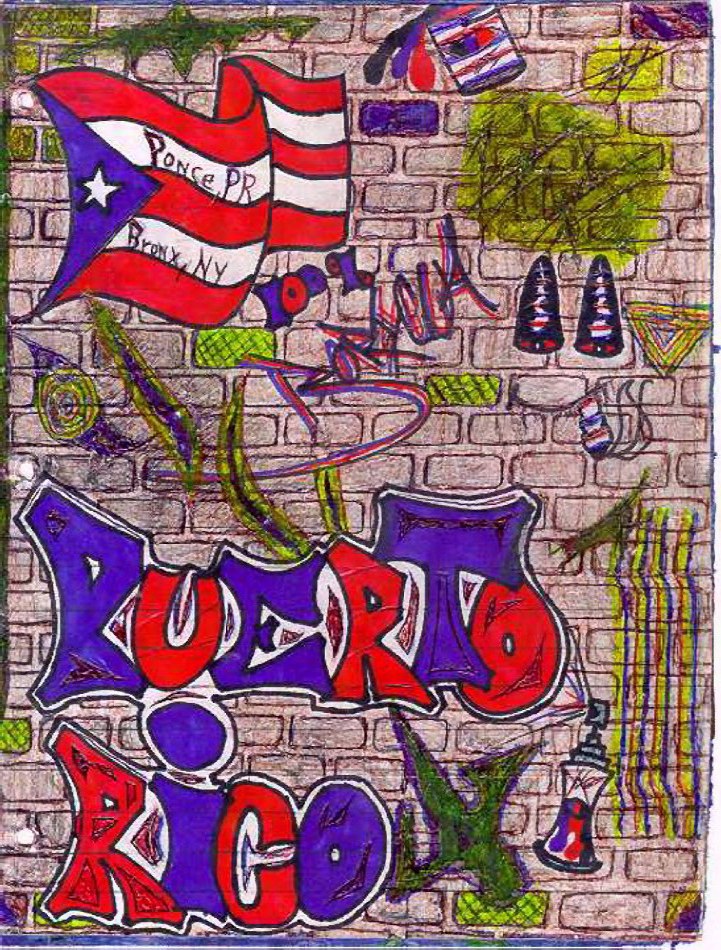
One of my friends draw this picture about puerto rico but with Bronx's style and I also did some draws on this picture.

The biggest town of Puerto Rico
New York